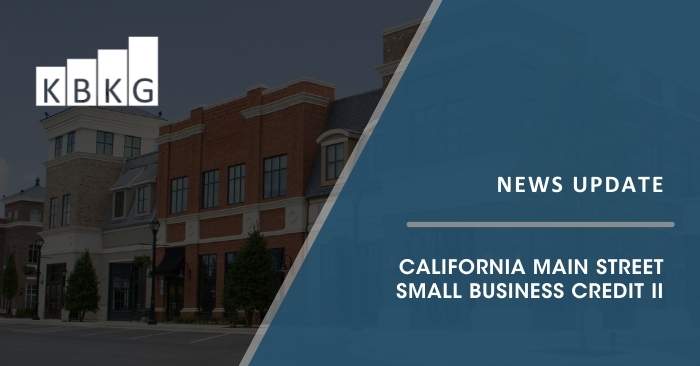In Late September 2021 Governor Newsom signed Assembly Bill (AB) 150 establishing the Main Street Small Business Tax Credit II. This bill provides financial relief to qualified small businesses for the economic disruptions in 2020 and 2021, resulting in unprecedented job losses.
Taxpayers that qualified for Employee Retention Credit may also qualify for the Main Street Small Business Tax Credit.
Employers that had fewer than 500 employees on December 31, 2020, subject to California withholding laws, would be considered qualified small businesses. Employers that had a reduction in gross receipts of 20% or more when comparing gross receipts for 2020 to gross receipts for 2019 would be considered to have been economically impacted.
The amount of the credit is $1,000 for each net increase in qualified employees, measured by monthly average full-time equivalents. Employers that had low headcounts from April 1, 2020 through June 30, 2020 and added employees during the 12 month period beginning July 1, 2020, and ending June 30, 2021 are good candidates for this program.
For example: If an employer meets the criterion above, and let’s assume they furloughed most of their 100 employees during the period from April 1 to June 30, and they retained five during the same period. If over the course of the year beginning July 1, 2020 they added seven employees per month until they reached a total of 89 (the original 5 plus 84), they would be entitled to a $45,000 California tax credit. This, of course, is in addition to any credits that would have been determined under the Federal Employee Retention Tax Credit program.
The Main Street Small Business Tax Credit II may be used to offset income tax or sales tax by making an irrevocable election.
A tentative credit reservation must be made with the CDTFA during the period of November 1, 2021 through November 30, 2021, or when the funds are depleted, whichever comes first. This credit is allocated on a first-come, first-serve basis.
The following information is needed to assess the opportunity:
Both 2020 and 2019 gross receipts. Payroll information during the periods April 1, 2020 to June 30, 2021. Business name, type of entity, mailing address, phone number, email. Number of employees as of December 31, 2020.
About the Author
Jason C. Melillo, Principal
Employee Retention Tax Credits
Jason Melillo is a Principal and Local Incentive practice leader at KBKG. His areas of expertise are Local Incentives, Employment Tax Credits which includes Enterprise Zones, Work Opportunity Tax Credits (WOTC), and other employment credits.
» Full Bio


